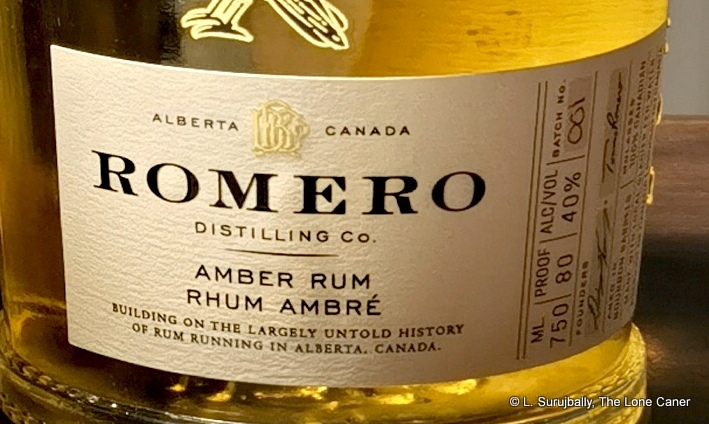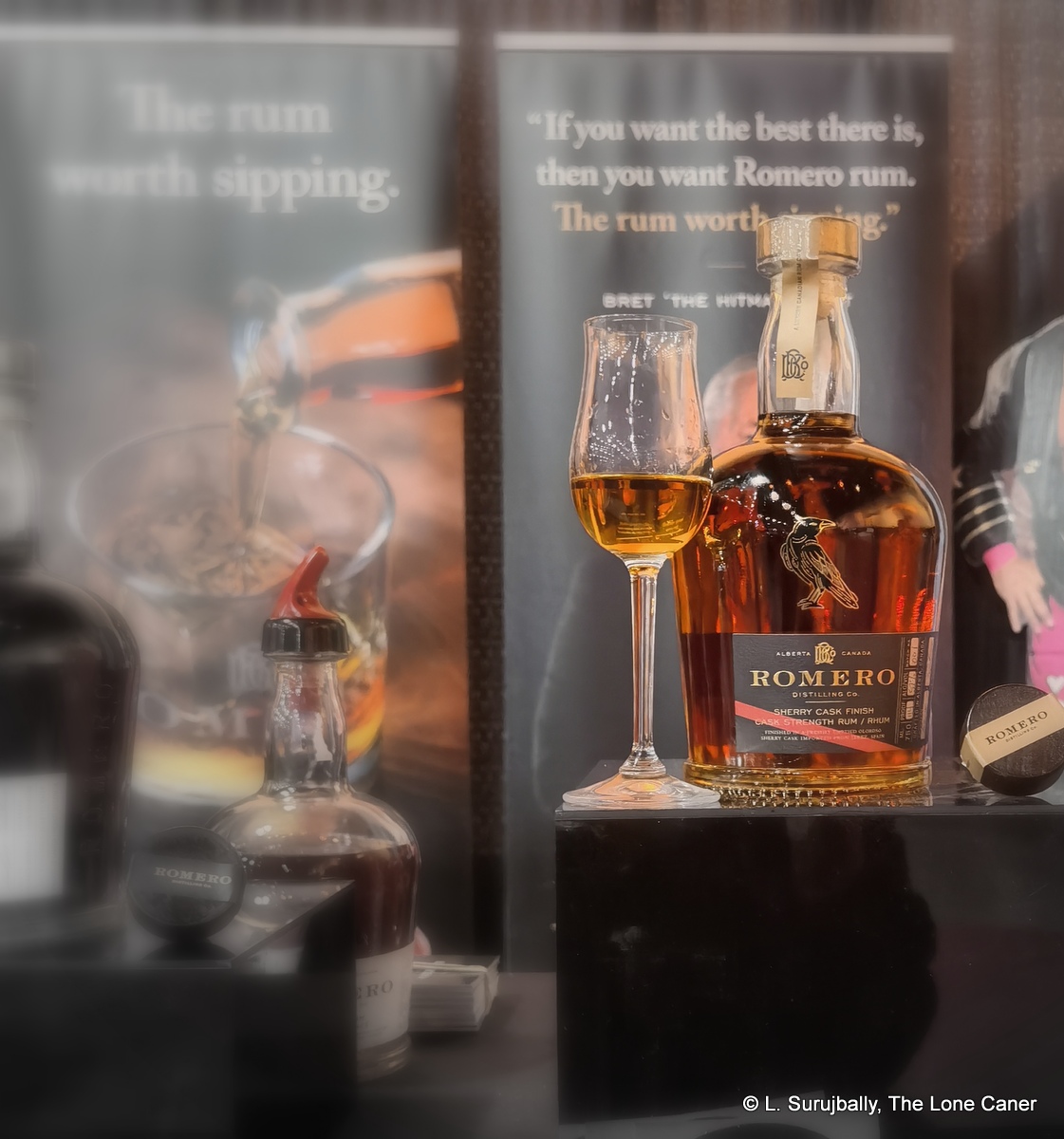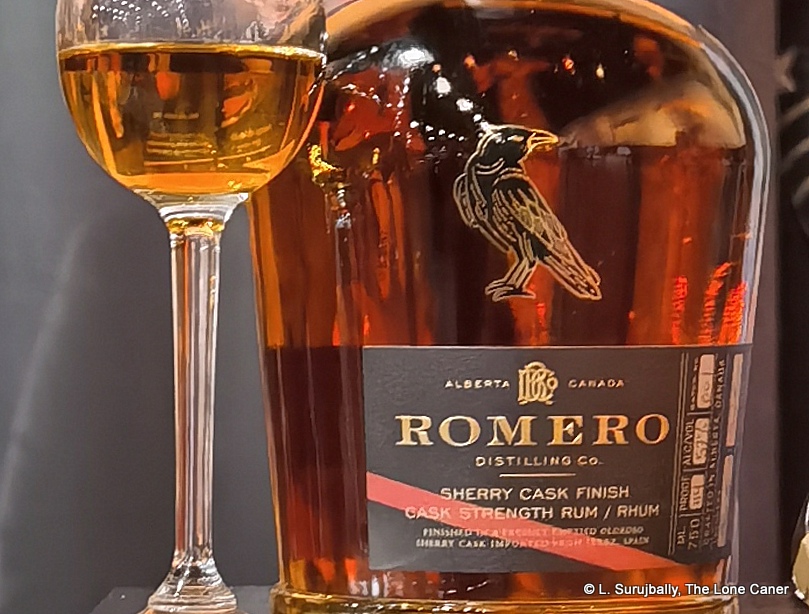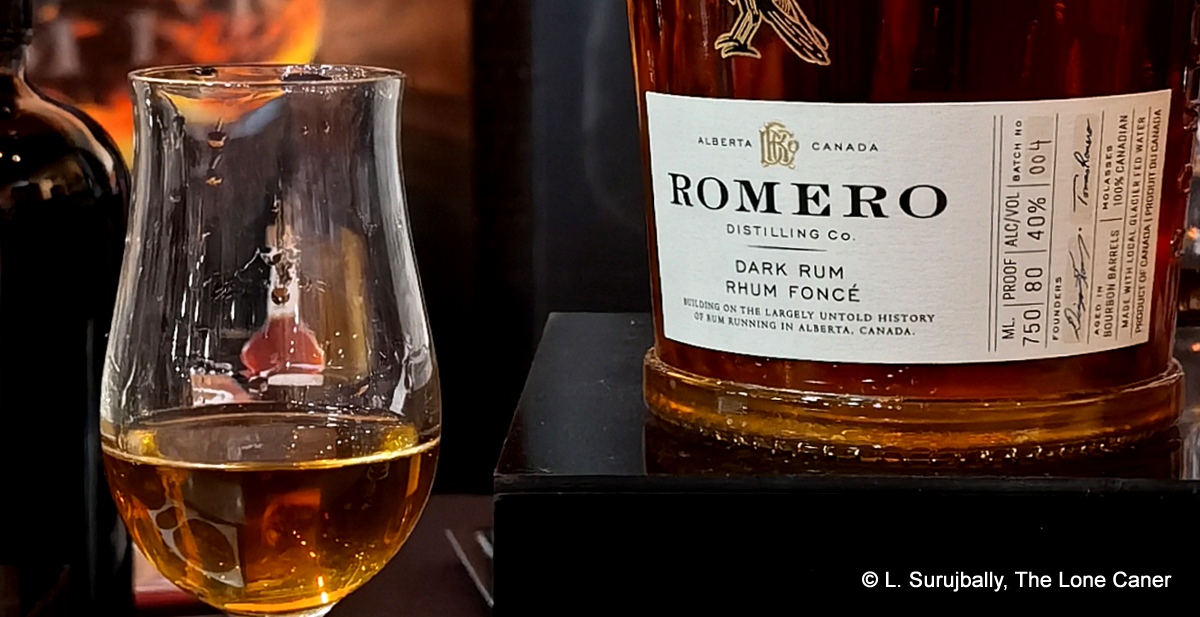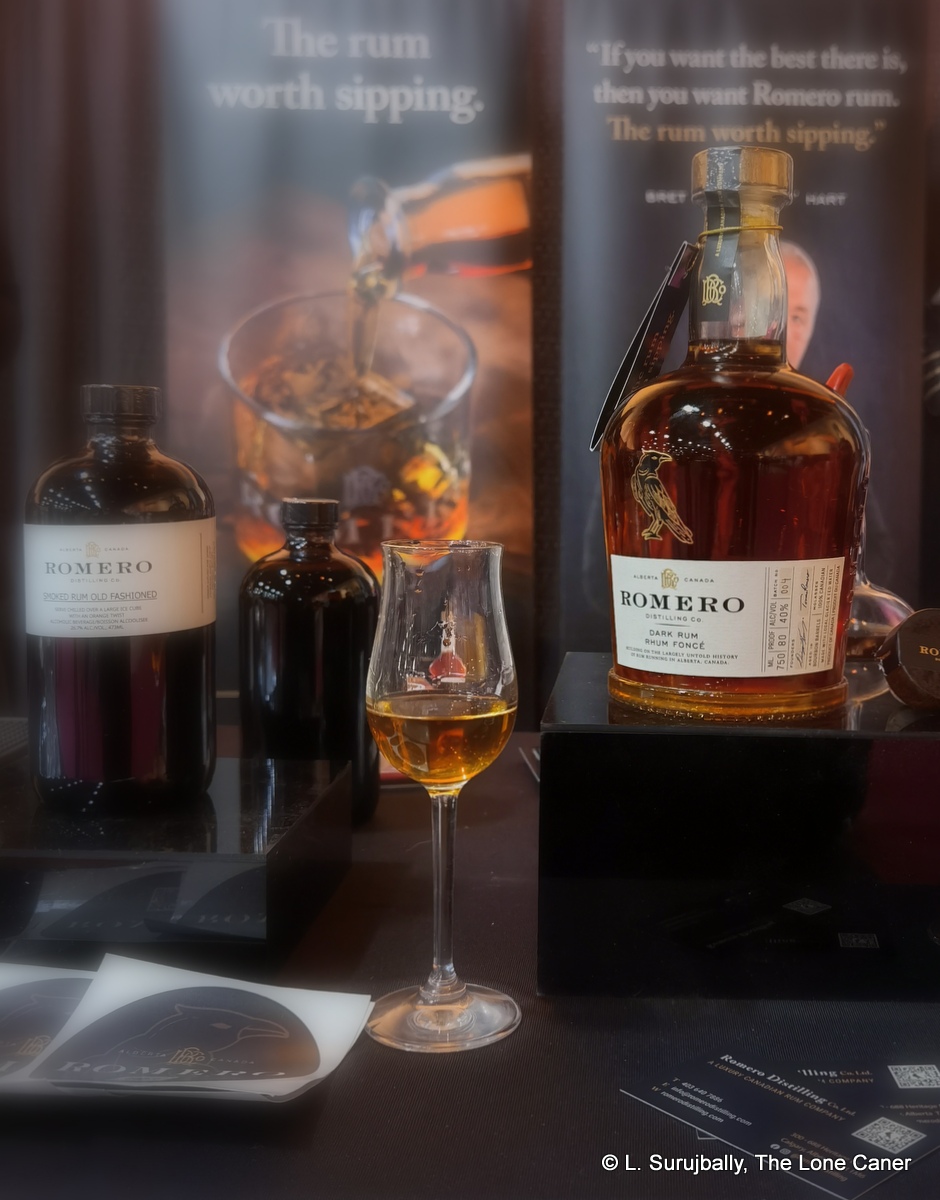Although I tried all three standard expressions of the Romero Distilling Co. at the Rocky Mountain Food and Drink show in Calgary in 2023, I had already bought all of them before, and this came in useful when double checking my quickly scribbled notes on the “Amber.” That was the one which I had almost bypassed in favour of the “Dark” and the extraordinary full proof Sherry Cask edition — which I still think is one of the best Canadian rums I’ve had to date.
A quick recap: the Calgary-based Romero Distilling Company was founded in 2018 by Diego Romero, an engineer who opened the distillery with his son Tomas (it was the latter who was running the booth that day), with a 2000-litre hybrid copper still and three 2000-litre fermenters; they use Crosby molasses from Guatemala (by way of New Brunswick) as its base, together with a commercial yeast. The company only makes rum, and remain very little known outside Alberta…which I’m hoping will change.
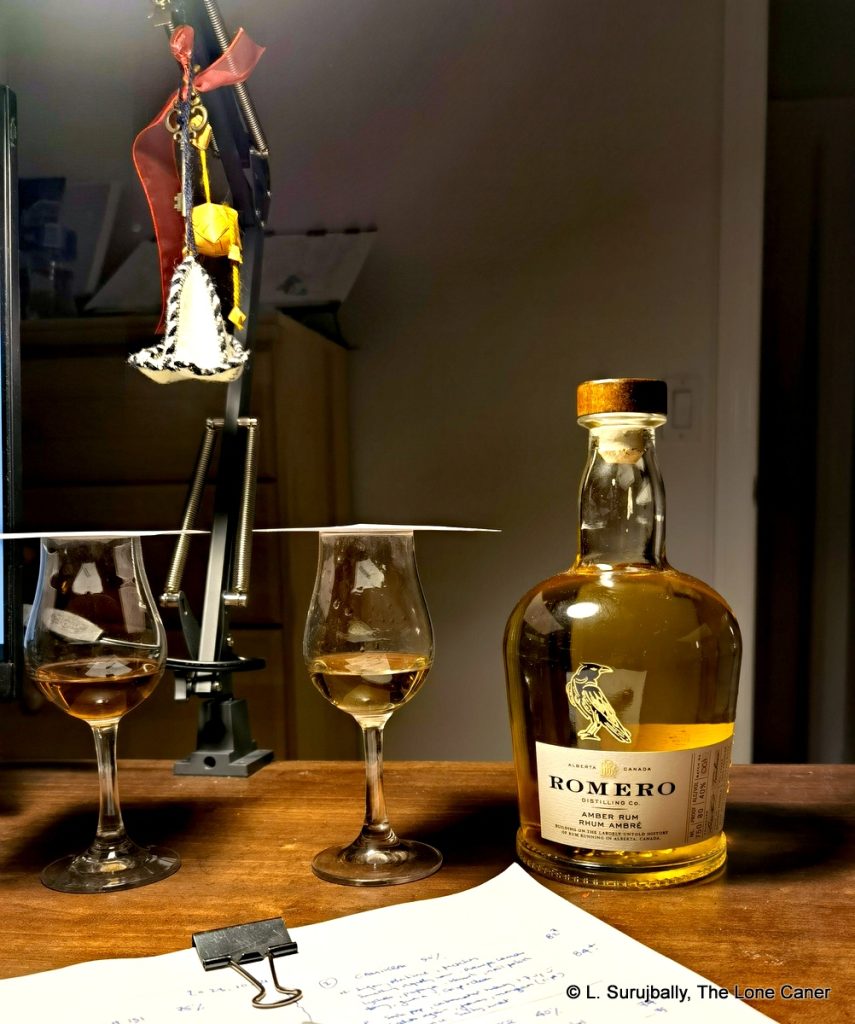 This rum derives from molasses, then, and is dialled in from a pot still configuration. We have no information on the duration of the distillation date, fermentation process, or the exact age of the resulting distillate. As far as I know, it’s a couple of years old (aged in ex bourbon Woodford Reserve barrels), with a relatively short time in the ex-Oloroso sherry barrels…a few months, perhaps – neither data point is provided. I am at a loss why such information is not placed front and centre on the label or the web page, since it would seem to be an obvious selling point, but Romero has stated that they want to de-emphasize the number-counting people do when considering ageing as a factor, and focus on the blend as a whole. As before, I think this is not the right course of action in today’s more open world. But that’s Romero, so let’s move on to what it’s actually like.
This rum derives from molasses, then, and is dialled in from a pot still configuration. We have no information on the duration of the distillation date, fermentation process, or the exact age of the resulting distillate. As far as I know, it’s a couple of years old (aged in ex bourbon Woodford Reserve barrels), with a relatively short time in the ex-Oloroso sherry barrels…a few months, perhaps – neither data point is provided. I am at a loss why such information is not placed front and centre on the label or the web page, since it would seem to be an obvious selling point, but Romero has stated that they want to de-emphasize the number-counting people do when considering ageing as a factor, and focus on the blend as a whole. As before, I think this is not the right course of action in today’s more open world. But that’s Romero, so let’s move on to what it’s actually like.
The nose starts off by being rather thin and uninviting, which is not unusual for a 40% rum, and it does present as somewhat alcohol forward without much that’s redeeming…until it starts to build up a head of steam. Then we get some plastic, plasticine, iodine and licorice, which is nice, and toffee, caramel, vanilla and brown sugar, which is better. As it opens up there are additional hints of new leather shoes, some spicy notes (cinnamon, maybe, and cardamom), and a peculiar, faint combination of fresh sawdust and peaches in syrup, all very delicate.
Much of this comes back on the palate when tasted. There’s some slightly sweet alcohol, glue, fly paper (I swear!), cardboard, hay and a milk-soaked long-standing bowl of weetabix. With some effort — the rum remains faint throughout and one really has to pay attention — there are also red olives and raspberries, but not a whole lot more. The finish, no surprise, is short and thin, but very clean and a little sweet. Not too bad.
Eschewing spices — supposedly it didn’t have any — and going for the sherry finish was probably a good idea, because really, the rum would be thin gruel without it. That finish saves it from being some kind of light 1970s throwback of the kind I’ve learned to endure (but not particularly like), and there’s enough going overall on for those with more sensitive snoots than mine to be able to sip it without undue issues.
For my money, however, the rum is too weak and it’s too faint, and that’s in spite of the sherry finish that provides such an intriguing but hard-to-sense counterpoint to the familiar vanilla and butterscotch notes coming from the ex-bourbon barrels. There’s potential here, and one can sense a better, stronger and more assertive rum waiting to emerge. It’s just not enough, and if we really wanted to see this thing cranked up, well, I guess then we’d call it the full proof edition, wouldn’t we, and it’s already established that that is the better rum. So for those who want to play it safe, save fifteen bucks and have a decent drink, this is the rum that will do the trick. For everyone else, it’ll be slim pickings.
(#1051)(75/100) ⭐⭐½

